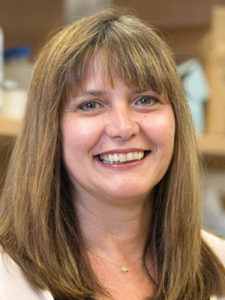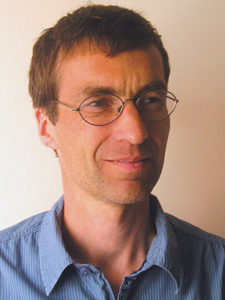
As new treatments emerge for osteoarthritis (OA), it is important for clinicians to understand how and which of these treatments reduce joint pain, and if pain reduction can combine to improve or perhaps worsen joint structure. Some new treatments may reduce pain without improving structure, but it is not clear if this will be good enough for patients or the Food and Drug Administration.
An ACR session, Emerging Treatments for Osteoarthritis: Targeting Pain vs. Structure, will address these issues on Tuesday from 12:30 – 2:00 pm in Room W375b.
In the first presentation, Anne-Marie Malfait, MD, PhD, will review key aspects of OA structural changes and OA pain mechanisms that may serve as targets for treatment. Dr. Malfait is Professor of Internal Medicine and the George W. Stuppy, MD, Chair of Arthritis at Rush Medical College, Chicago, IL.
“In osteoarthritis, pain severity does not always correlate with the extent of joint damage, and there is evidence that altered central pain processing plays an important role in maintaining pain in some people with OA,” Dr. Malfait said. “However, there is compelling clinical evidence that ongoing peripheral input from the affected joint drives OA pain, even at late stages of the disease. This offers a tremendous opportunity for targeting the periphery.”
In recent years, she said, osteoarthritis research has focused on a multitude of pro-inflammatory and pro-catabolic pathways that produce profound changes in the joint environment.
“Distinct pathways are active in different articular tissues, including cartilage, subchondral bone, and synovium,” Dr. Malfait said. “The integration of these pathways results in complex networks that drive disease progression and promote pain. This may offer opportunities for targeted intervention in distinct but overlapping subsets of OA.”

The second presenter, David Walsh, FRCP, PhD, will discuss how inhibition of joint pain by selected agents may be achieved without improvement in joint structure. He will question whether improvement in pain alone will satisfy patients and doctors, and if it comes at the cost of a risk of worsening structure, would it be acceptable? Dr. Walsh is Professor of Rheumatology and Director of the Arthritis Research UK Pain Centre at the University of Nottingham and Consultant Rheumatologist at Sherwood Forest Hospitals NHS Foundation Trust, Nottingham, England.
“Novel biologic treatments that can effectively reduce OA pain by reducing peripheral sensitization, such as NGF-blocking antibodies, have potential to relieve disability and distress,” Dr. Walsh said. “Such treatments, however, may come at a cost and with potential adverse events requiring specialist supervision.”
Rare but important adverse events from NGF blockade include rapidly progressive OA, he said, noting that the mechanisms behind this condition are currently unknown, but might involve interactions with the effects of nonsteroidal anti-inflammatory drugs.
“Other molecular targets for reducing peripheral sensitisation in OA are currently being explored, as are treatments that reduce nociceptive transmission and pain signaling within the central nervous system,” he said. “While further research is needed before cautious introduction into clinical practice, a shift from surgical to medical care for osteoarthritis could transform the nature of rheumatology practice across the world.”

In the session’s final presentation, David J. Hunter, MBBS, PhD, FRACP, will talk about recent and emerging disease-modifying OA drugs (DMOADs) that target structure, which of them may or may not improve pain, and whether improving structure without improving pain is acceptable. Dr. Hunter is the Florance and Cope Chair of Rheumatology and Professor of Medicine at the University of Sydney and Chair of the Institute of Bone and Joint Research at Royal North Shore Hospital, St. Leonards, Australia.
“The traditional one-size-fits-all approach to OA is unlikely to be successful—more targeted, phenotype specific treatments are currently being developed in the disease/structure modification space for osteoarthritis,” Dr. Hunter said. “Disease modification is an area of active therapeutic research development, including numerous agents that have now progressed into phase II and phase III trials. We should expect that some of these will be submitted for regulatory approval and be available for more widespread use soon.”
